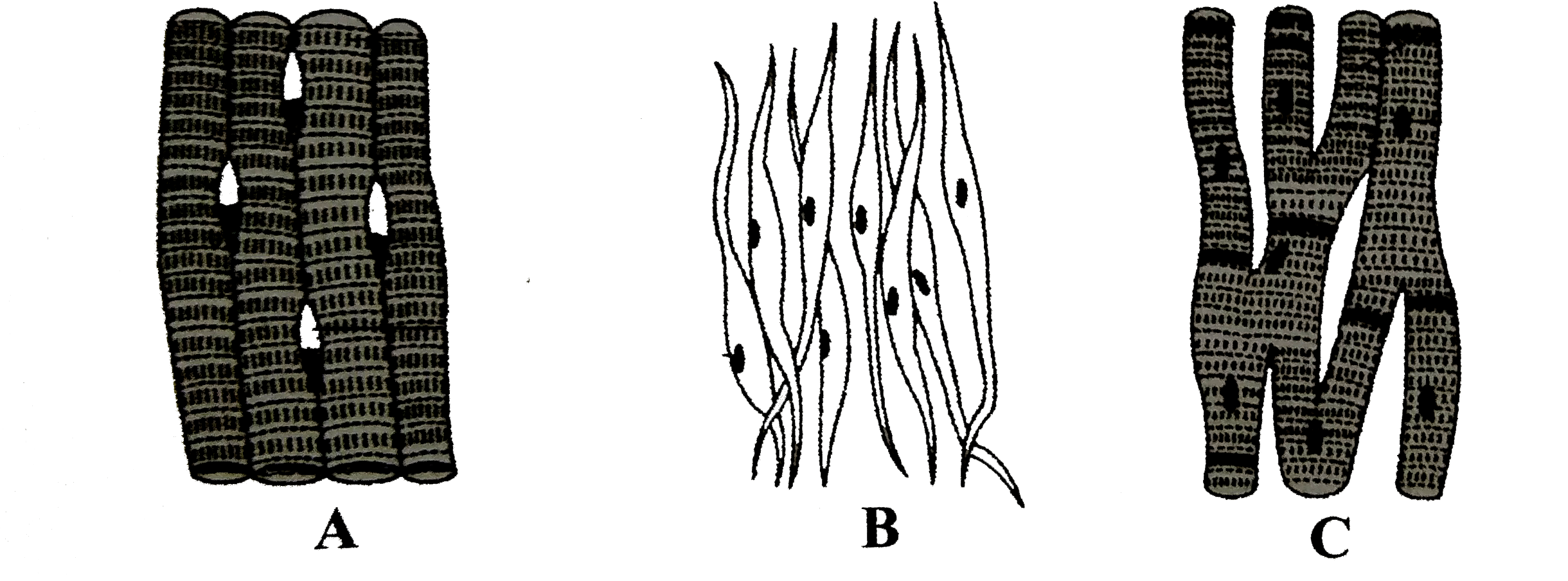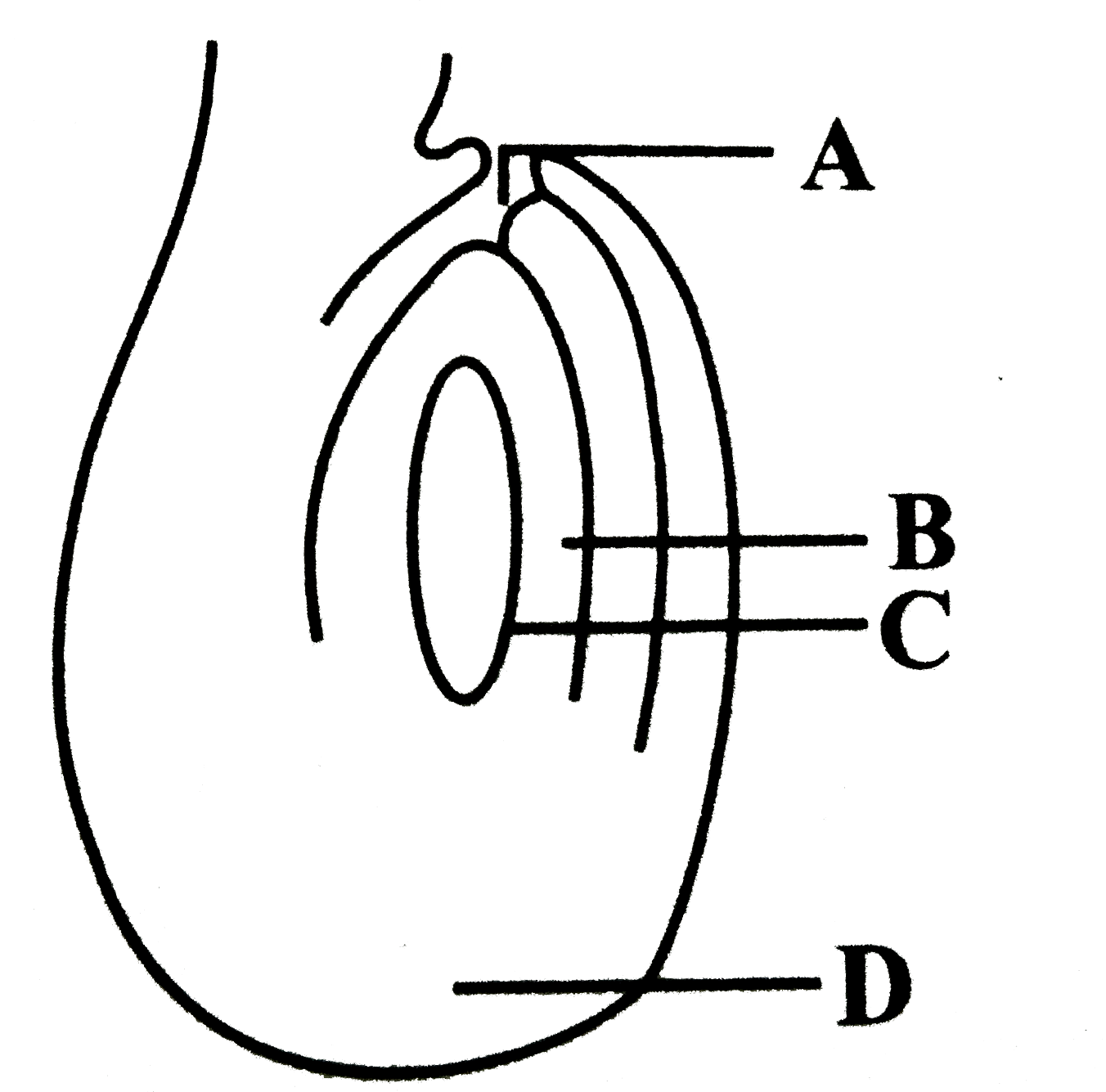The figure shows the results of an experiment involving photoelectric effect. The graphs A,B,C and D relate to a light beam having different wavelengths . Select the correct alternative

Beam B has highest frequency
Beam C has highest frequency
Beam A has highest rate of photoelectric emission
Photoelectron emitted by B have highest momentum
The correct Answer is:A, B, C, D
Stopping potential∝frequency∝1wavelength
Saturation current∝rate of photoelectron
emission. Also, K.Emax=hv−ϕ,P=√2mKE
Topper's Solved these Questions
- SIMPLE HARMONIC MOTIONBOOK - ALLENCHAPTER - SIMPLE HARMONIC MOTIONEXERCISE - Exercise - 09
2 Videos
- SIMPLE HARMONIC MOTIONBOOK - ALLENCHAPTER - SIMPLE HARMONIC MOTIONEXERCISE - Exercise - 10
2 Videos
- SIMPLE HARMONIC MOTIONBOOK - ALLENCHAPTER - SIMPLE HARMONIC MOTIONEXERCISE - Exercise - 07
2 Videos
- RACEBOOK - ALLENCHAPTER - RACEEXERCISE - Basic Maths (Wave Motion & Dopplers Effect) (Stationary waves & doppler effect, beats)
24 Videos
- TEST PAPERBOOK - ALLENCHAPTER - TEST PAPEREXERCISE - PHYSICS
4 Videos
Similar Questions
In an experiment on photoelectric effect, the stopping potential is measured for monochromatic light beams corresponding to different wavelength. The data collected are as follows:
wavelength (nm): 350 400 450 500 550
stopping potential (V): 1.45 1.00 0.66 0.38 0.16
Plot the stopping potential against inverse of wavelength on a graph paper and find (a) the Planck constant, (b) the work function of the emitter and (c) the threshold wavelength .
View SolutionIf →A×→B=→C+→D, then select the correct alternative.
View Solution
Knowledge Check
Identify the figures A,B,C showing different types of muscle and select the correct option
 A A B CSmooth muscle Striated muscle Cardiac muscleB A B CCardiac muscle Smooth muscle Striated muscleC A B CStriated muscle Smooth muscle Cardiac muscleD A B CInvoluntary muscle Voluntary muscle Heart muscle
A A B CSmooth muscle Striated muscle Cardiac muscleB A B CCardiac muscle Smooth muscle Striated muscleC A B CStriated muscle Smooth muscle Cardiac muscleD A B CInvoluntary muscle Voluntary muscle Heart muscleGiven figure shows the effect of interruption of skotoperiod (dark period) in a short day plant by light of different types.

Select the correct option for (i),(ii) and (iii).A(i)(ii)(iii)FloweringFloweringNo floweringB(i)(ii)(iii)No floweringNo flowering FloweringC(i)(ii)(iii)No floweringFloweringNo floweringD(i)(ii)(iii)FloweringNo floweringNo floweringIdentify the marking A, B, C and D in the figure given below and select the correct option.
 AA-light chain, B- heavy chain, C- antigen binding sites, D- disulphide bonds.BA - disulphide bonds, B- antigen binding site, C- heavy chains, D- light chainsCA-antigen binding sites, B- light chain, C- heavy chains, D- disulphide bondsDA- antigen binding sites, B- disulphide bonds, C- light chains, D- heavy chains
AA-light chain, B- heavy chain, C- antigen binding sites, D- disulphide bonds.BA - disulphide bonds, B- antigen binding site, C- heavy chains, D- light chainsCA-antigen binding sites, B- light chain, C- heavy chains, D- disulphide bondsDA- antigen binding sites, B- disulphide bonds, C- light chains, D- heavy chains
The figure below shows the section of a cillia/flagella showing different parts labelled A and B select the correct labelled name ?

View SolutionIdentify the parts labelled as A,B,C and D in the given figure and select the correct option from the given codes.

View SolutionFollowing figure shows P-T graph for four processes A, B, C and D.Select the correct alternative

View SolutionIdentify the parts labelled A,B,C and D in the given figure and select the correct option.

View SolutionIdentify the parts labelled A,B,C and D in the given figure and select the correct option.

View Solution
